A video lives many lives before it lands before viewers.
It’s not just press record and post. Brands are using videos more than ever to earn attention.
- At least 91% of businesses are using it as a marketing tool. [Source: Wyzowl]
- It’s because nearly 70% prefer watching videos. [Source: The Social Shepherd]
That means the pressure is on.
A video can make or break a brand’s image. But how do great videos happen?
They go through a process. Nope. Several processes.
There are mainly 6 stages in a marketing video lifecycle.
However, the common ones are pre-, production, and post.
Stage 1: Concept development
Source: https://localeyesit.com/boston-video-production-company/
Identify goals
Before you hit record, ask yourself: What do I want to achieve?
You may have several purposes but narrow them down. Having multiple goals can cause you to lose track. Plus, designing strategies can become messy.
So, it’s better to focus on one goal per video. That’ll effectively guide you towards achieving the goal.
Now, ask again, what result do you want from the video? Is it to-
- Drive conversion and sales?
Set clear goals to make it easier to follow.
Target the right audience
Now, identify who you’ll talk to. Your target audience can be:
- The general public
- Existing and potential customers
- Influencers
- Industry professionals
- Niche groups
- Stakeholders
But don’t target everyone. This will make the video generic. Rather, focus on specific groups based on your product or service. Study the audience demographics- age, gender, interests, and needs.
Then personalize your message accordingly. This makes your video more impactful. Adobe Experience Cloud shares in an article that- “Personalized videos get-
- 16 times higher click-to-open rates and
- 4.5 times more click-throughs”
Brainstorming ideas
What will grab the audience’s attention?
Explore several creative ideas. Add emotion or humor to the story depending on the concept. Ensure dynamic narration. A compelling, relatable story always works with people.
As the author Thomas Newkirk says, “Humans are naturally drawn to storytelling.”
Try mind mapping, question storming, or simple listing. This can help you brainstorm ideas more effectively.
Scripting and storyboarding
Craft a solid script for live-action or a storyboard for animation. They are like your roadmap. You can also go with both.
- A script is your story written down with dialogues, actions, and scene details.
- A storyboard is like sketches of scenes that help visualize shots and flow.
Outline your key points. Keep the language simple and engaging. Consider visual and sound effects.
Stage 2: Pre-production planning
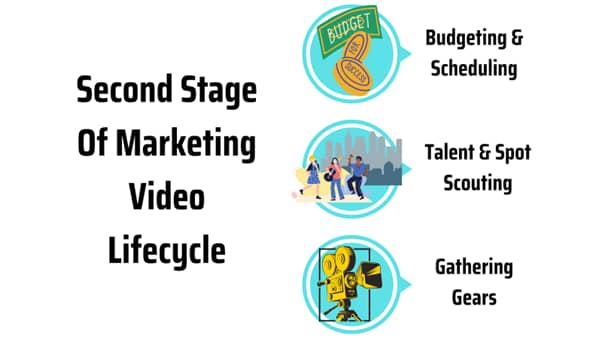
Source: https://localeyesit.com/boston-video-production-company/
Budgeting and scheduling
Money matters.
Set a realistic budget that covers all aspects.
The budget can vary based on project size and goals. It can be
- $3,000+ for simpler, basic content with make-shift techniques
- $50,000+ for mid-level marketing videos with premium technique
- $100,000+ for high-end productions with full teams and top-tier equipment.
You can also hire a video production company like LocalEyes to handle the project. They’ll take care of all aspects, leaving you stress-free.
A production house can charge $5,000 to $200,000+ based on project size, scope, video type, and tech use.
Create a timeline to keep everything on track. Ensure everyone follows that.
Casting and location scouting
If your video needs a face, pick someone who can fit the tone and convey your message efficiently.
- Go with actors if the script is complex or needs strong delivery. Pro is perfect for commercials.
- If you want honesty and trust, use real people (nonactors). They’ll be great for testimonials.
The script is done? Start scouting locations early. The place should match your story. It can be
- Places with key attractions
Think about the light, sound, safety, and how easy it is to shoot there. Always check if you need a permit.
Bad lighting, place, or noise can ruin a shoot.
Collecting Equipment
Gather your gear.
Ensure everything works and is ready to go. Stick to your schedule to avoid last-minute stress.
Stage 3: Production
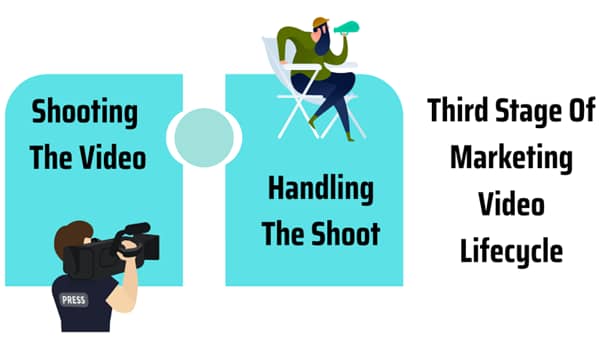
Source: https://localeyesit.com/boston-video-production-company/
Filming the video
Have all the gear and gadgets ready. It’s time to shoot.
Follow the script and storyboard. Capture each scene as planned.
Apply different techniques like framing and camera movements. This can make the content more creative.
Ensure high-quality footage. The team should bring out the best visuals from the location. This will make editing easier.
Test shots first. Bad framing ruins everything. Shoot multiple takes to get the best performance. Editing fixes mistakes, but not terrible footage.
Managing the shoot
Keep things organized.
Assign roles to your crew: director, camera operator, and sound technician.
Good teamwork guarantees a smoother shoot.
Make sure your shots are consistent. This will help create the best final product. Direct the crew and talent so everyone understands their roles.
Monitor lighting and sound throughout the shoot. It’ll maintain quality. Be ready to adapt if anything unexpected comes up.
Stage 4: Post-production
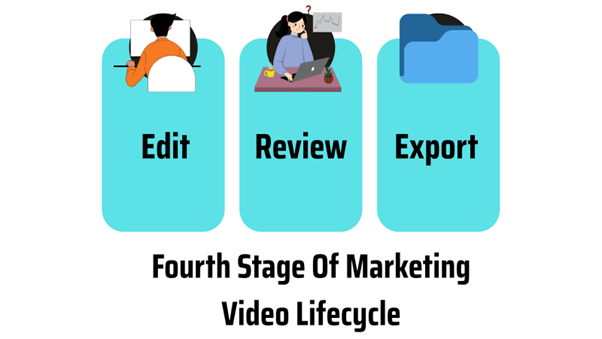
Source: https://localeyesit.com/boston-video-production-company/
Editing
Here, all the footage will be combined with proper edits to get a good shape.
- Trim unnecessary footage
- Add smooth transitions
- Incorporate visual effects and sound design to enhance storytelling.
- Remove background noises.
- Adjust color grading and temperature.
Smooth edits keep viewers engaged.
Use clear voiceovers to clarify messages and graphics to highlight key points.
Assess the work
Review your video. Check out errors or areas of improvement.
Talk to people and get feedback from others. They can give you valuable insights.
Export the file
Different platforms have different requirements.
Export your video in formats suitable for each platform. This ensures optimal quality.
Stage 5: Distribution and promotion
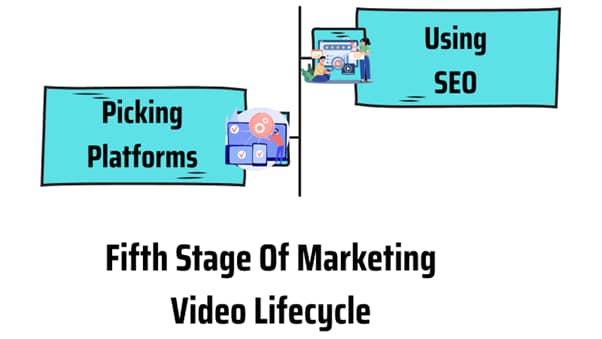
Source: https://localeyesit.com/boston-video-production-company/
Choosing platforms
Identify the channels where your viewers are most active.
It can be-
|
Use social media insights and get data on the timings when your TG uses the app the most. Post accordingly.
SEO and tagging
Help people find your video.
- Use relevant keywords in your title, description, and tags.
- As for metadata, add your company name. Give relevant descriptions of the content.
Using video SEO elements helps increase visibility.
Most internet users usually avoid the second page on Google.
Even Reputation911 says that 91.5% of people never go past the first page.
Some Quora users highlight that only 6-10% go to the second page.
Plan your launch.
Don’t release the video now. First, tease your audience with shorts, then make the right move.
Use email, social media, and other channels to promote the content.
Stage 6: Performance analysis
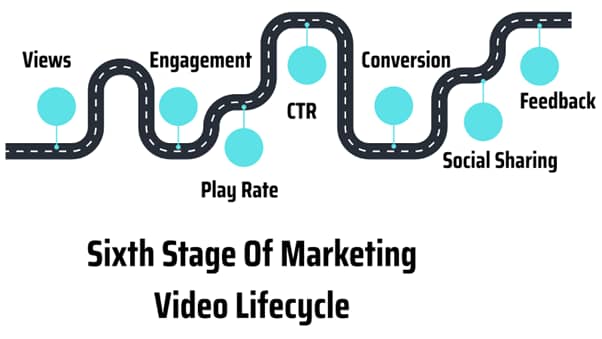
Source: https://localeyesit.com/boston-video-production-company/
Key metrics
Measure success.
Track key performance indicators. This includes
- Views
- Engagement
- Play Rate
- Click-through rate
- Social Sharing
- Conversion
- Feedback
Such data and key metrics show what worked and what didn’t. Adjust your strategy based on the report.
Analytics tools
Gather data by using analytic tools like
- Google Analytics or
- Platform-specific insights
These tools provide detailed performance reports.
FAQ: The lifecycle of a marketing video
What is the video marketing life cycle?
The marketing video lifecycle covers the different stages a video goes through. It includes concept development, pre-production, production, post-production, distribution, and success measurement.
How long should a marketing video last?
30 seconds to 5 minutes. The sweet spot is 30 to 90 seconds. That’s how long a marketing video should last. It’s short enough to hold attention and long enough to wrap up the concept.
What are the 5 stages of the product life cycle in marketing?
Here are the 5 stages of the product life cycle in marketing: product development, introduction, growth, maturity, and decline.
What are the 5 stages of the digital marketing life cycle?
- Planning and Strategy Creation
- Implementation and Traction
- Conversion and Expansion
- Understanding Your Audience
- Strategy Research and Re-implementation

